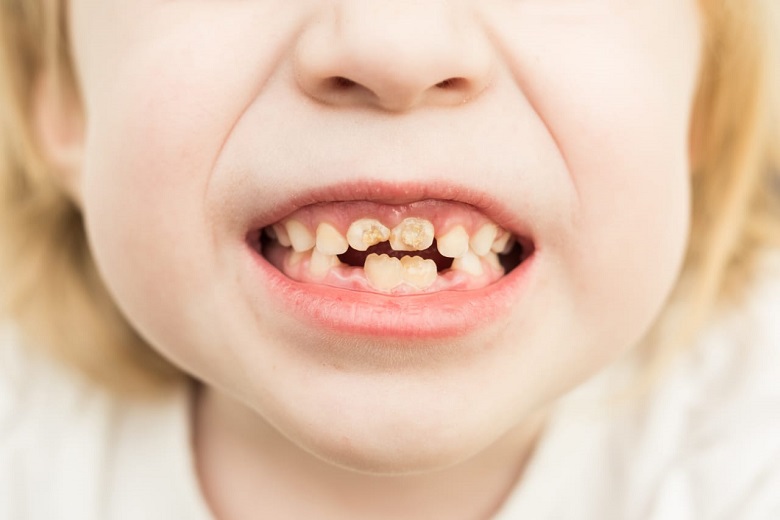The Centers for Disease Control and Prevention (CDCP) said that 20% of children between ages five to 11 in the United States reportedly have at least one untreated decaying tooth. Unresolved dental problems like cavities or tooth decay impact a child’s quality of life, often attributed to more missed school days and lower grades.
As parents and caretakers, it is vital to impart good dental habits to a child as early as possible to prevent long-term health issues. Finding a healthcare provider or dentist who offers comprehensive oral health programs or kids first pediatric dentistry solutions should be sought after the first tooth erupts.
Overlooking matters concerning oral and dental health may result in lifelong impacts of having bad teeth, including speech difficulty, bad breath, and even altering a person’s facial structure, conditions we don’t want our kids to experience.
However, it is essential to remember that sometimes we overlook certain conditions or situations that trigger our kids’ teeth deterioration. This article will then discuss the symptoms, causes, and treatment for bad teeth to prevent permanent damage to your kids’ quality of life.
Causes
Tooth decay is one of the most common childhood oral conditions. Bacteria buildup, which results in the sticky, colorless film found on the surface of a tooth, is called plaque. This root of tooth decay can even permeate the gums and cause damage to the root of a tooth.
It is essential to know what factors cause tooth decay so you can avoid these or limit your child’s exposure. The following are the usual causes of this dental condition:
1. Diet
A significant contributing factor to tooth decay is diet. A child who consumes a diet filled with carbohydrate-rich foods like rice, potatoes, pasta, and bread is highly at risk of having tooth decay. Frequent consumption of problematic foods like cookies, soda, candies, and even fruit juices is significant in dental plaque buildup, especially if oral hygiene is not correctly observed.
Early childhood is the perfect time to ingrain good nutrition and habits in your child. Aside from limiting the consumption of carbohydrate-rich foods, you may want to start exposing your child to proper food nutrition. Good nutrition plays a significant factor in preventing oral hygiene issues through exposure to various foods that combat plaque formation.
2. Lifestyle
Incorporating proper oral hygiene should be part of a child’s routine as early as age zero. Teaching them how to clean their gums even before the first tooth erupts is vital for good oral hygiene habits.
Another habit you may want to limit is allowing your child to sleep with a bottle in his mouth. It can be challenging to avoid this kind of setup, especially if you are breastfeeding or your child has become attached to feeding himself while drifting off to sleep. You have to remember that milk trickling down inside his mouth makes a suitable environment for plaque buildup.
Lastly, training your child to drink water frequently helps not just the hydration of their body but, it encourages the movement of saliva in their mouth. A child who doesn’t drink much water can have a dry mouth or have food debris stuck between his teeth, leading to bacteria buildup.
3. Location and Environment
The community you belong to can also contribute to the probability of your child developing tooth decay. Communities in geographic spaces with little to no fluoride in their drinking water are prone to developing plaque and tooth decay.
It can also be noted that the accessibility of snacks and drinks that can cause tooth decay, like sweets and soda, also has a significant influence on the oral health of a community. The availability of grocery stores selling these decay-inducing food at low prices encourages families to select these over healthier but more expensive food options.
4. Genes
Like it or not, your children may inherit genes that influence your teeth’ appearance, alignment, and even strength. Your family’s history is considered in determining the possibility of any oral health problems. Some families have a history of weak enamel, odd tooth shape, or low saliva production. It’s crucial to be extra cautious if you have dental conditions in your family and stay vigilant with your child’s oral health.
Symptoms

Each child is different, and they may have unique experiences when dealing with tooth problems. Some common symptoms to look for when monitoring your child’s teeth are:
- The white, chalky band on the gum line signals the beginning of tooth decay.
- The yellowish, brownish, or black band near the gumline suggests the progression of decay.
- Teeth that look like black or brown stumps
- Visible holes in a tooth. The color of the stains you see on your child’s tooth determines how deep the cavity is; the darker the color, the deeper the hole.
- Tooth sensitivity. Look out for reactions when your child consumes something hot or cold. Sometimes, consuming sweet drinks or food can also trigger tooth pain.
- Mild to sharp pain when biting down. Teeth sensitivity may also be observed when your child bites down on food or pacifier.
- Weight gain difficulty can also be a symptom. Failure to get the right balance of minerals and vitamins through the consumption of food is also a possible sign of dental decay.
- Your child may feel sudden pain with no apparent cause. You may have noticed episodes where your child suddenly becomes fussy, grumpy, or weepy without any external factor. Crankiness, in addition to the tugging of the ear, may be attributed to a tooth problem.
Other Symptoms
The advanced cases of tooth decay are fever, inflammation (causes face swelling and pain), or abscess presenting from a tooth. Immediate consultation with your dentist is recommended to avoid the progression of infection.
Treatment
Nobody wants to see their kid crying and suffering. It’s vital to take action immediately in addressing any tooth problems. When left untreated, plaque accumulation, usually colorless, can develop into discolored, calcified deposits called Tartar – a more advanced dental condition that causes unsightly teeth, leads to deteriorating of gums, and possibly more severe signs of infection.
Do take note that there are five stages of tooth decay and each stage will require a particular treatment. Here’s a list of treatment to expect when resolving tooth decay:
- Fluoride treatment: the earliest phase can still be reversed by a fluoride treatment. Expect your dentist to apply a varnish type or gel-like substance to your kid’s teeth to strengthen the enamel; thus, making the teeth resistant to acids from plaque. A particular brand of toothpaste with fluoride can also be prescribed for your child’s daily use.
- Fillings: once tooth decay enters the stage of enamel decay, this form of treatment is given when the tooth decay is way past the initial demineralization stage. The dentist will have to numb the affected tooth with local anesthesia before drilling through the tooth enamel to clear away signs of decay. The said hole will then be filled with material such as dental amalgam, ceramic, or resin.
- Crowns: crowns are needed when a tooth is in the dental decay stage. The dentist will remove the decayed part of the tooth then place a dental crown on top of it. Sometimes healthy tooth tissue is also removed to ensure the proper fit of the crown. Different types of material can be used in crowns like ceramic, porcelain, resin, or metal. The material used will be dependent on the affected tooth’s location, the color of surrounding teeth, and the position of gum tissue: also how much of the tooth will be visible when you talk or smile, how much of the natural tooth is still intact, and most importantly, the function of the tooth in need of a crown.
- Root canal: once the damage reaches the pulp or the soft center of the tooth, it will then be completely removed. This procedure will need an anesthetic, application of an antibiotic, and will proceed to seal the tooth with gutta-percha, a rubber-like material. A round of oral antibiotics may also be prescribed. The finishing touches of this treatment is a temporary filling that will seal the tooth and prevent further damage to the treated root canal.
- Tooth Extraction: this procedure is prescribed when an abscess forms in the tooth and the tooth is already deemed damaged beyond treatment.
- Modified diet: Becoming more intentional with the food you serve your child is a big thing you can do to treat bad teeth if, in case, you haven’t booked an appointment with your healthcare provider or dentist. Serve them with nutritious foods like vegetables and natural fruits instead of depending on juice boxes. Eating fibrous, crisp vegetables and fruits with their skin on, like an apple, can stimulate saliva production, thus gently removing plaque buildup found between the teeth.
Prevention Is Better Than Cure
Early detection of tooth decay means better results in reversing tooth decay with the help of your health provider or dentist. In most cases, parents fail to catch the signs in early childhood, which leads to major dental treatment and irreversible dental damage.
As mentioned above, teaching your child good eating habits and hygiene habits can significantly decide their health. Children respond more to adults who model the behavior they want to teach, so it’s high time also to check your habits and routines.
Brushing with fluoride and flossing twice a day, exposing your child to a wide variety of healthy meals and snacks, drinking plenty of water rather than juice or soda, keeping up with a visit to the dentist twice a year, and not allowing your child to nap or sleep while drinking from a bottle are just some ways you can prevent future dental problems.
Final Words
The overall health of your child is dependent on what you teach them from the beginning. Helping them grow into a healthy adult means keeping an eye on the subtle things that may be bothering them. Having bad teeth is the effect of accumulated bad habits. As their caregiver or parent, it is up to you to nip these bad habits in the bud, create an environment that encourages good dental hygiene, and persuade them to take care of their shiny pearls.

